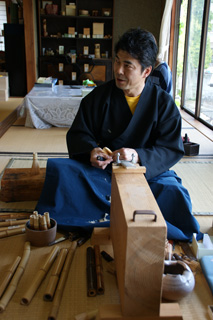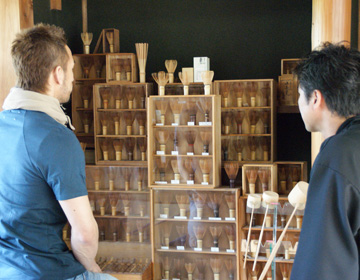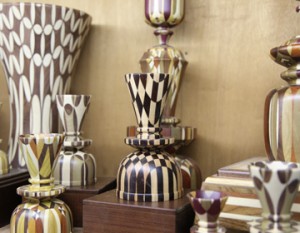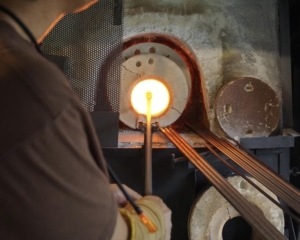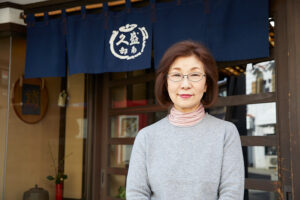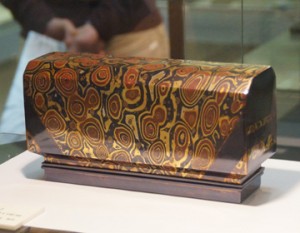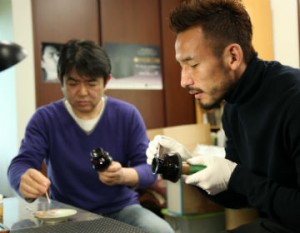Tradition passed down in the home of “chasen”
The tips of the bamboo lightly touches the tea bowl. The gentle sound of whisking tea is heard during the tea ceremony.
Ceramic bowls and tea vessels are important for the tea ceremony, but ”chasen” is obviously equally as important. Ikoma city in Takayama is responsible for approximately 80 to 90% of all ”chasen” in the country. It is a village home to ”chasen”.
The History of Takayama Chasen
”Chasen” became indispensible for tea around the 15th century, when matcha became the main type of tea served at tea ceremonies. The ”wabi” tea founder Jukou Murata appointed Sozei to create ”chasen” as a tool to whisk tea. After a a period of struggling, he completed the ”chasen”. The ”chasen” he completed was presented to the emperor at the time, who was impressed so much with its beauty, he named it ”Takaho”.This is the start of the Takayama ”chasen”. Techniques used to create Takayama ”chasen” is a family secret, secretly passed on to only one son. Tango Tanimura is the 20th generation who has inherited the secret techniques.
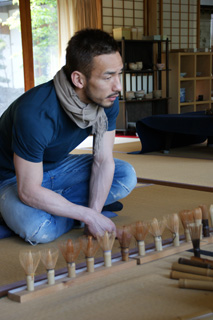
Delicate technique to make “chasen”
”Chasen” is a ”tool”. Therefore the priority lies in usability. It take extremely delicate skills to create, as each bamboo differs and the craftsman needs to adapt to each according to its characteristic. When you observe the ”chasen”, you realize that it is intricately made, with each and every tip delicately completed. It is no wonder the beauty captures your eyes.
At this workshop, the ”chashaku”, the small wooden spoons used to scoop ”matcha” powder, are made as well. Nakata had a try at carving one. It is carved out of one piece of bamboo, and Nakata’s hands need to loosen up for the process.
”Chasen” tends to be regarded as a minor tool in the whole art of tea ceremony, but it in fact has a profound existence. Its graceful appearance represents a tradition that has been continuously carved for over 500 years.
